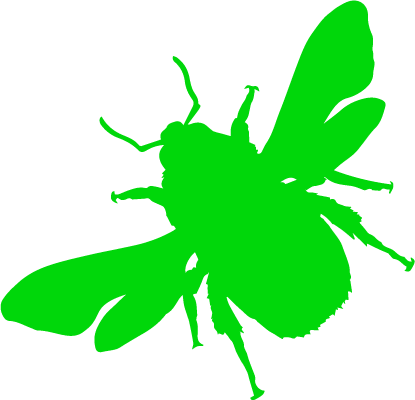Could urban planners be less human?
by Kate Poland

Sometimes when I’m walking around my allotment and nearly treading on a toad or beetle, I try to imagine what animal I would be in the wild – churning up soil, lumbering heedless of the smaller creatures at my feet, deracinating plants, turning things upside down but also providing nutrition and water. I usually compare myself with a large bovine beast grazing, plodding heavily, crushing habitats but often just standing around ruminating. This perspective has arrived since I did the More than Human walk with City, University of London. We arranged a group stroll from one community garden in Hackney to another taking on the ‘persona’ of a different creature – a bee, bird or butterfly for example. It seems like a simple and perhaps childish thing to do but it really has changed the way I look at the urban environment and how I might plan green spaces within that. And I want to pass that shift in perspective on to other gardeners.
As part of the walking tour, we looked at various tasks in the probe pack which I found beautifully creative and appealing. I love the sideways approach to the environment – how would you make signposts relevant to a bat? How would you advocate as a different animal? How can we put nature at the centre of decision-making rather than on the fringes?
Cordwainers is a small organisation that hopes to connect people with their environment and each other in similar creative ways. We support community gardens and gardening in Hackney, East London. Two years ago we set up a Union of Gardens to help make them more visible, combine and exchange skills and resources and advocate for these small but valuable spaces. We know the many benefits gardening – and community gardening in particular – provide for people and nature. They are safe spaces which can help reduce isolation and anxiety and improve social, physical, environmental and even political health. The Union hopes to promote their many benefits and make them more accessible for more people and creatures.
Over the years we have run a short course on how to set up and maintain a community garden. We start with design – looking at the space and designing it to take account of how people want to use it. Now I’ve explored the probes, I’m thinking about incorporating them into the early stages of garden design to look at how other creatures might use the space for food and water, rest, nest and procreation – and also putting more thought into the levels of sound and light. This would not only help those creatures by providing food and habitats, but will help us by making green spaces more resilient. I’m working with Hackney Council and residents to design and develop some spaces to turn into gardens on a couple of estates so will be putting this into practice straight away by brazenly copying some of the probes for the consultation.
On a bigger scale, the one thing that community gardens fear is Planning. One of the reasons gardens join the Union is if they are under threat and, usually being small and isolated, have little support in the wider community to protect or even advise them. There is understandable competition for space in this densely populated place. Housing needs to be built but if nature and community isn’t incorporated into plans – at the very least – we will end up with a very unhealthy population which, in the end, will cost more (if cost is how we measure these things).
We have built up relationships with parts of the council we bump into like Parks, Housing, Regeneration, Resident Participation or Public Health. We meet them in person and they come to events. They understand the importance of green communal space. The department that NEVER comes out into the community is Planning. We are only likely to meet them if we have the time and courage to turn up at one of the intimidating planning meetings at the council when it’s usually too late. It’s no wonder they dismiss our concerns and only consult us after the plans have been submitted – often with nature and climate resilience as an afterthought. They really don’t understand the environment they serve.
We tend to categorise nature into goodies and baddies (ladybirds, bumblebees, robins – Good; magpies, wasps, ivy – Bad) but all are as destructive or beneficial as each other, and each provides food for something else. If you let those aphids on your roses be, rather than zap them with pesticides, some blue tit will discover them and dispatch them within minutes. Similarly, if we were more tolerant of the moulds, beetles or caterpillars that find food or shelter on our plants we might start to see them as a positive indication of life. This is just a shift in perspective and helps us to see nature as a whole, interrelated thing. A question I ask myself now when I look at a pigeon or other familiar ‘pest’ walking around the streets is not ‘what is it?’ but ‘what is it doing?’. It might be foraging, nesting, wooing or learning to fly, all in our busy, noisy, smelly, human-centric streets. The creature then becomes fascinating, almost wondrous (how can anything survive here?) and its status as a pest is irrelevant.
Gardeners often have to think outside ourselves because we need to put our plants’ needs ahead of our own. We need to assess how water, nutrition, light, soil, space and aspect might affect the plants we raise – as far as possible from the plants’ point of view – to make a healthy space. If we can extend this way of thinking to nature in general, the streets around us and us as animals within that landscape, perhaps we will allow nature the space, light and peace to survive or even thrive.
If nothing else I will be spending more time as a cow ruminating on it all.
